When you look at the postwar automotive world, it is easy to find examples of just how fertile the human mind can be. Some of these automotive pioneers, both from large companies and those that were going their own way, came up with some wildly out-of-the-box solutions to problems we didn’t know we had. Take for example this 1958 Berkeley SE-328 for sale on Craigslist in Mission Viejo, California. This tiny car with its equally tiny engine became a giant killer in both racing and on the street. Then, in a fit of madness, these cars were discovered decades later by speed freaks who decided to jam superbike engines under their hoods. Is this diminutive former heart transplant Berkeley with work still ahead for its new owner worth the price of admission at $5,500? Thanks go to T.J. for this tiny tip!
One of the biggest accelerants to the rise of independent manufacturers after World War II was the discovery of glass-reinforced plastic. Commonly known as fiberglass, this magnificent material freed producers big and small from the incredible expense of stamping dies and the gargantuan machines that used those dies to make body panels. Think of how cell phones changed everything in communications. While it is a bit of an apples-and-oranges comparison, the point is that the new technology was a radical departure from the norm that allowed the smaller company with a good idea to enter production. It also allowed Chevrolet to produce the first Corvettes with limited investment and cash-strapped Kaiser to bring to market the radical Kaiser-Darrin. The impact of GRP cannot be understated.
The benefits of this wonder material for producing automotive bodies were not lost on the folks at Berkeley Cars in Biggleswade, Bedfordshire in England. The company was one of the largest camper producers in Europe but wanted to branch out to fill gaps in their schedule. Called caravans across the pond, sales of these getaway vehicles were highly seasonal. It didn’t hurt that two of the leaders of the company were also race fans. Using the company’s experience with GRP, they came up with a design that would dominate the 750-cc class of amateur racing series around the world.
What rolled out of their shops was a Lilliputian vehicle powered by a 15-horsepower twin cylinder two cycle engine. That voluminous amount of power was sent to a chain-driven transmission and through said transmission to the front wheels. While it made an Austin-Healey Bugeye look like a new Cadillac in size and power, the undeniable combination of reduced weight and great handling made it, quite literally, the little sportscar that could do great things. Customers that fit in them generally loved these ingenious little beasts both on the road and on the track. While some were imported to the United States, sales weren’t enough to keep the company afloat after camper sales sank. Around 4,100 Berkeleys were produced when the lights finally went out in the factory.
The car you see here is a modified version of the Berkeley SE328. This is a product improved version of the initial SA322 with a more powerful 18-horsepower engine. The company bragged that this 650 lb sportscar weighed just 650 pounds but could go 70 MPH and get 70 MPG. While those numbers were a bit optimistic, the cars that Berkeley imported into the United States were primarily this model. They sold well considering the unorthodox nature of the whole car in comparison to the usual vehicle inhabiting American showrooms.
Berkeley had almost faded into history when American hot rodders of a different sort discovered that modern motorcycle engines could be stuffed under the hood of one of these tiny terrors. It wasn’t long before high horsepower engines were shoehorned into Berkeleys that left the factory with barely double-digit horsepower. Driving one must have been like the many scenes in Star Wars where someone cries out “Punch it!” and the Millennium Falcon goes all hyperspace or something. This car was the recipient of one of those transplants, and the builder even went so far as to reinforce the chassis with aluminum. It must have been quite an interesting experience to stomp on the gas for the first time in such a vehicle.
Maybe that is why the current owner has sourced the proper engine to return the car to its original state. The conversion hasn’t happened yet, and the work will fall into the new owner’s lap. Other than the aftermarket aluminum wheels included with the sale and a homemade side exhaust, the car still has a stock appearance. That also seems to include the drum brakes that those wheels are bolted to. It makes one wonder if they were up to the task of an exponential increase in horsepower.
That would be just one of the considerations of the new owner. If you weren’t chasing AACA Senior awards and just wanted to live life on the edge of insanity, why not put a high horsepower motorcycle engine back under the hood of this little red stallion and go out hunting Mustangs and Camaros at night?
Would you keep this Berkeley stock or shop for Kawasaki crate motors? Please share your most insane thoughts in the comments.
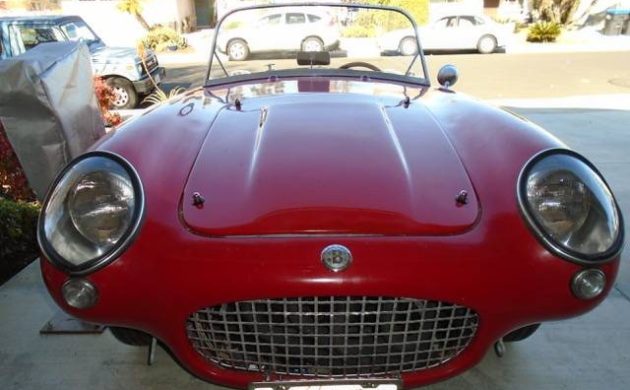
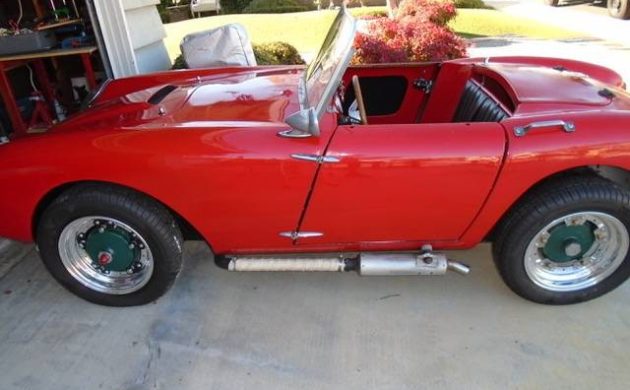
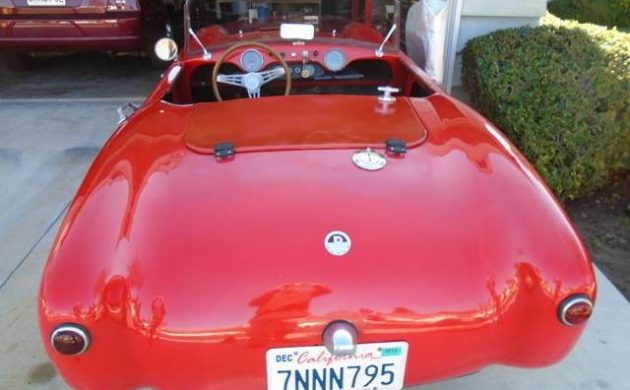
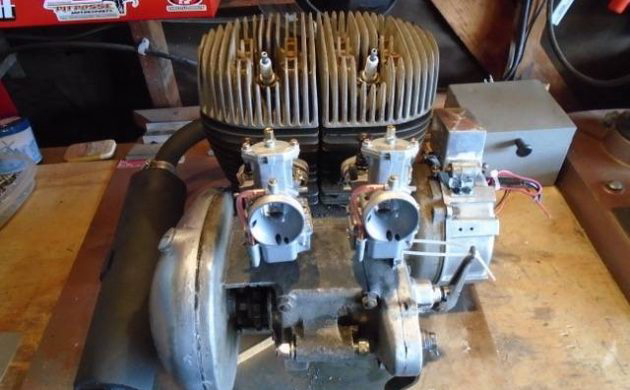
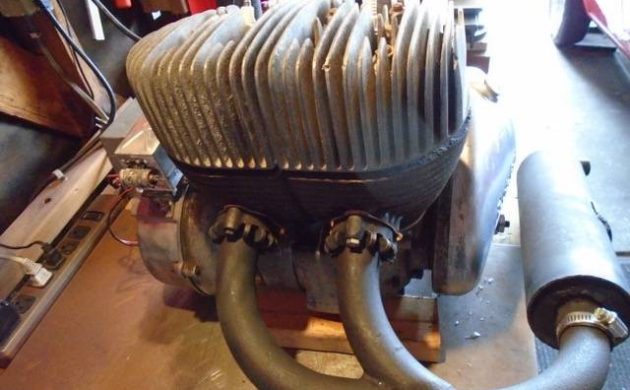


Michelle also did a nice write-up on this car back in March.
March was a real listing, this one is reusing the pictures to scam. The owner of the car has been trying to get craigslist to pull the listing all week.
That’s a flat-out steal.
I think I’d split the difference with a Yamaha RD350 engine: 39 HP, light weight, and great parts support, and not likely to be more than driver or chassis can handle. But 15 seems really low–even Yamaha’s 200cc 2 stroke put out 22 HP.
Yamaha’s 200cc was the poor man’s 250cc, the least powerful of the Rd lineup 125, 250, 350 (cubes to hp), very reliable though. I traded mine in the same dealer i bought it and went off for the ultimate at the time Kawa 500cc
For such a cheap flimsy “car” it is surprising how many survived, if existing as a mostly complete pile of parts today is surviving . . .
I’ve always loved both the looks of the Berkeleys and the concept (which I am going to characterize as “how much fun can we get out of a small vehicle”). I also love what I would consider to be good old American ingenuity of stuffing (much) higher horsepower motorcycle engines into the chassis….
My only problem with owning one myself – which I would love to do – is that I cannot conceive of the size and shape of the shoehorn that would be required to get myself into the cockpit.
Scratch the word “small” and replace with “teeny, tiny”.
This will fit in that 57 Cadillac trunk 😂posted before this. I can’t see how 6ft person can fit in it. This is a toy car. 😂
Its a lot of fun.
I’m restoring a 1959 492 now. 3 cyl. Excelsior 2 stroke. I’m fitting a rare hardtop…………………Jim.
A buddy of mine in the army had a three-wheeler which he let me drive. At the time I had an MG Midget, so the size of the Berkely wasn´t all that tiny as far as I was concerned. The machine was great fun on the huge parking lot of Fort Bliss. I had no problems with fitting or getting in and out of the little roadster. Agreat little machine if memory serves , after all I am talking here about the early 60´s. Incidentally, a 22 horse Yamaha mill mated to this would be a gas.
I am restoring a 1959 SE 492 wit a hard top. It is my winter project. ………..Jim.